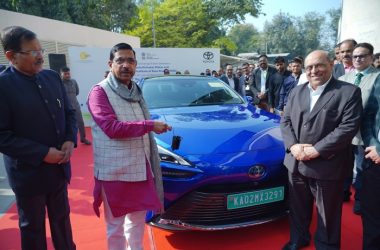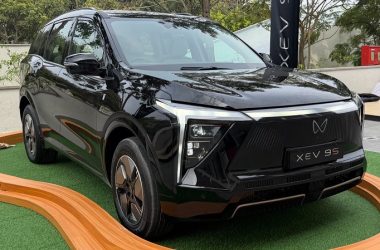In a major stride towards sustainable transportation, the Government of India has launched the PM Electric Drive Revolution in Innovative Vehicle Enhancement (PM E-DRIVE) scheme. Officially notified by the Ministry of Heavy Industries (MHI) on September 29, 2024, the initiative aims to supercharge the nation’s electric vehicle (EV) ecosystem through fresh incentives, technological upgrades, and massive infrastructural investments.
Digital Push: E-Vouchers for EV Buyers
One of the standout features of the scheme is the introduction of E-vouchers—a digital incentive for individuals purchasing electric vehicles. These vouchers will allow buyers to directly avail of government subsidies under the PM E-DRIVE scheme, streamlining the process and making EV adoption more consumer-friendly.
New Vehicle Categories: E-Ambulances and E-Trucks
For the first time, the government is extending financial incentives to e-ambulances and e-trucks, allocating ₹500 crore for each category. This move is aimed at reducing pollution from heavy-duty vehicles and enhancing patient care through eco-friendly ambulance transport. To encourage adoption of e-trucks, buyers must furnish a vehicle scrapping certificate from Ministry of Road Transport and Highways (MoRTH)-approved scrapping centers.
Strengthening EV Backbone: Testing & Infrastructure
Recognizing the need for rigorous safety and performance standards, the scheme allocates ₹780 crore for the modernization of vehicle testing agencies. This upgrade will ensure compliance with global benchmarks and improve consumer confidence in EV technologies.
Additionally, a significant ₹2,000 crore has been earmarked for the development of public charging infrastructure across India, including in states like Andhra Pradesh. This nationwide push for accessible EV charging aims to eliminate range anxiety and encourage wider adoption of electric mobility.
Green Transit: 14,028 E-Buses for Urban India
In a major urban mobility intervention, the government has allocated ₹4,391 crore for the procurement and deployment of 14,028 e-buses. Initially, the focus will be on nine high-population cities—Mumbai, Delhi, Bangalore, Hyderabad, Ahmedabad, Chennai, Kolkata, Surat, and Pune—each with populations exceeding 40 lakh.
For regions with unique geographical challenges such as the Northeast, hilly states, island territories, and coastal areas, tailored operational models, potentially beyond the traditional OPEX model, will be explored. However, no specific city has been allocated e-buses under the scheme yet, allowing flexibility in future rollouts.
The difference between PM E-DRIVE scheme and FAME-II scheme are as under-
| S. No. | Details | PM E-DRIVE scheme | FAME-II scheme |
| 1. | Outlay | ₹10,900 crore | ₹11,500 crore |
| 2. | Scheme Period | 2 Years available till 31.03.2026 | 5 Years i.e. 01.04.2019 to 31.03.2024 |
| 3. | New Components under Demand Incentive | E-ambulances and e-trucks have been introduced under the scheme with an outlay of ₹500 crore each. | These EV segments were not available under FAME-II scheme. |
| 4. | New Component under Grants for Creation of Capital Assets | Provision of ₹780 crore for Upgradation of Testing Agencies. | FAME-II had no support in form of Grants to Testing Agencies. |
| 5. | Aadhar based face authentication, generation of e-voucher and selfie uploading | The Scheme has a unique feature of Aadhaar based face authentication has been introduced under the scheme. Further voucher generation and uploading of selfie authenticating the sale is another unique feature of this scheme. | There was no such provision under FAME-II. |
| 6. | Conditional incentive on furnishing Scrapping Certificate | For e-buses, preference will be given to those states, which plan to deploy e-buses after scrapping old ICE buses. For e-trucks, to avail subsidy, submission of a scrapping certificate of ICE trucks has been made mandatory. |







